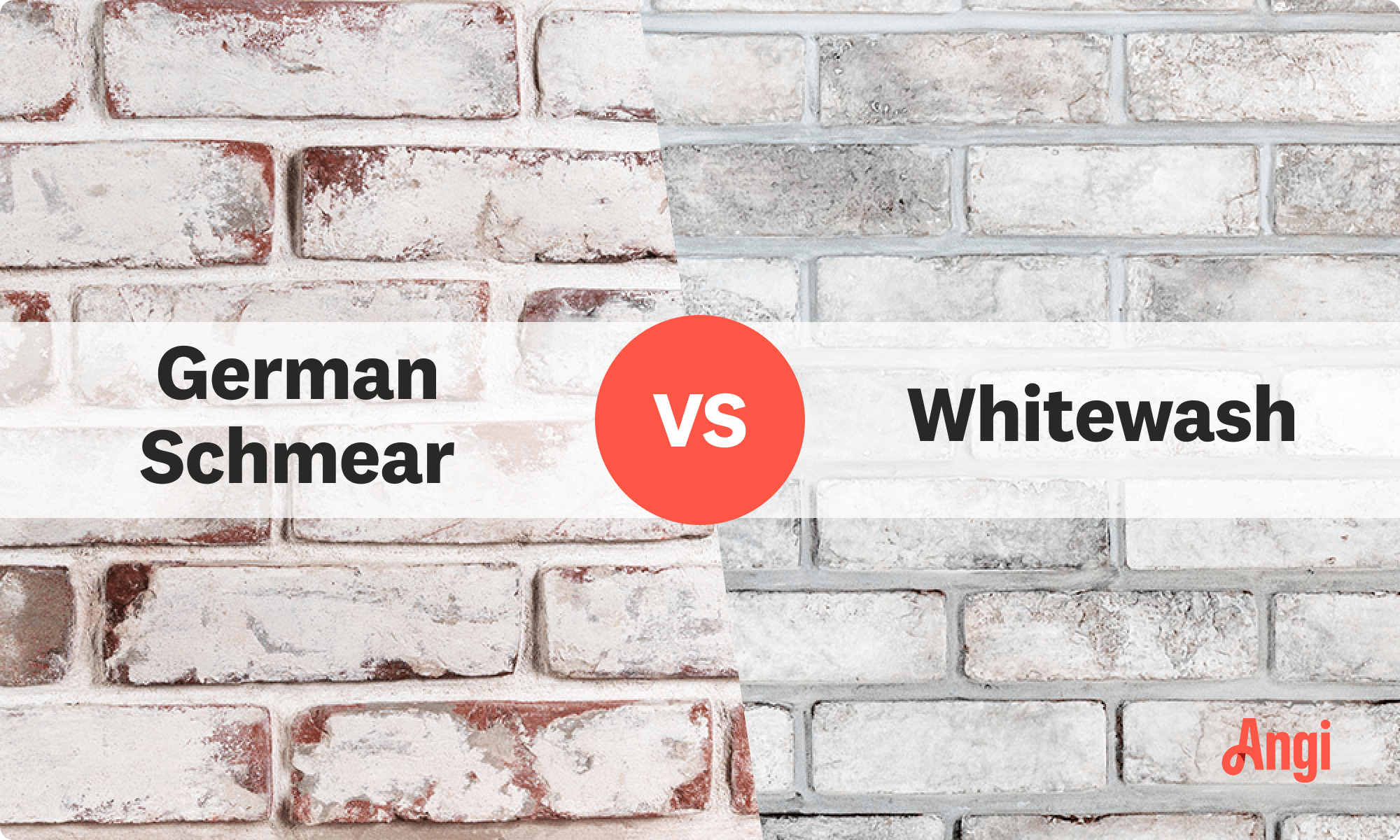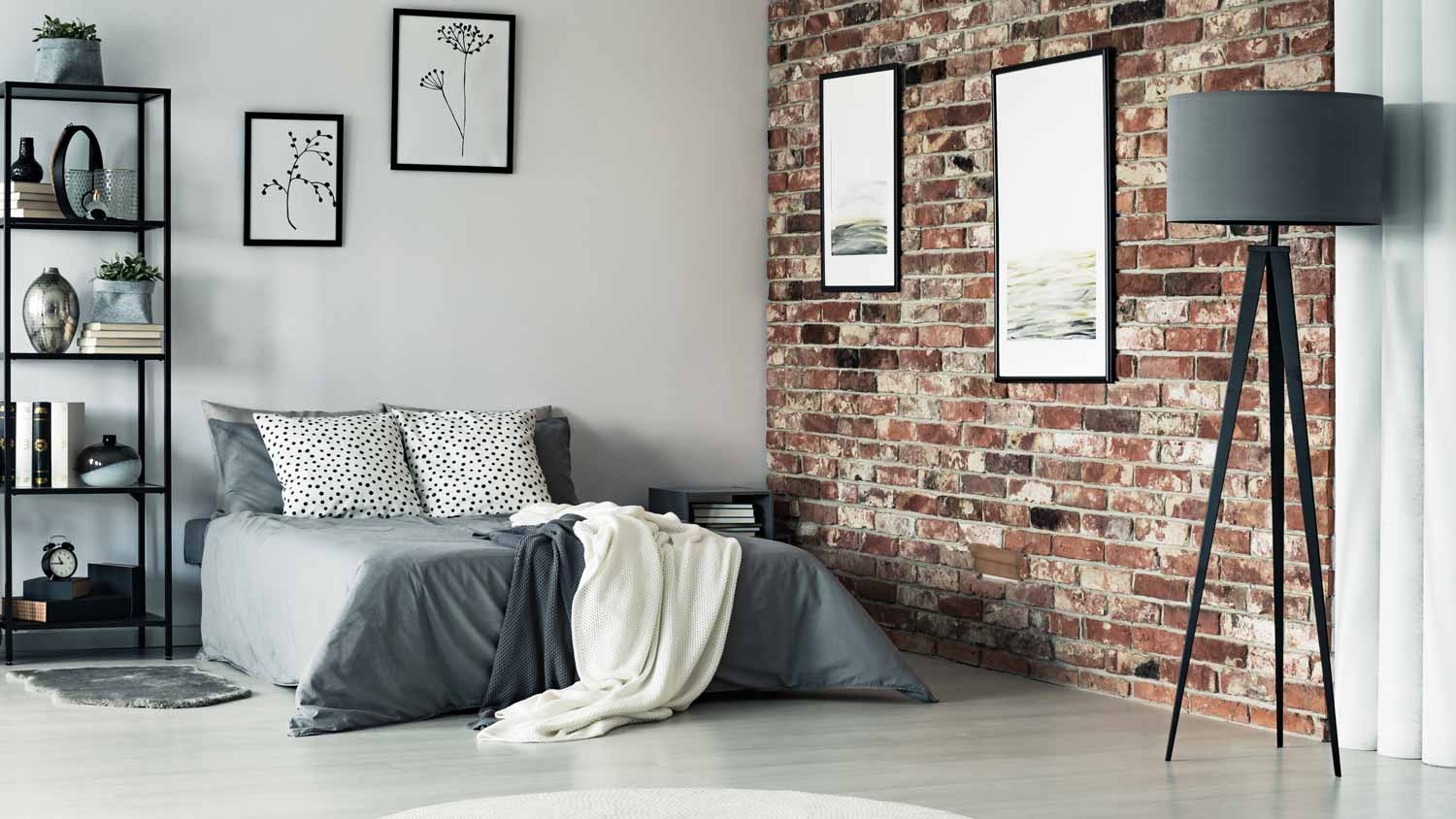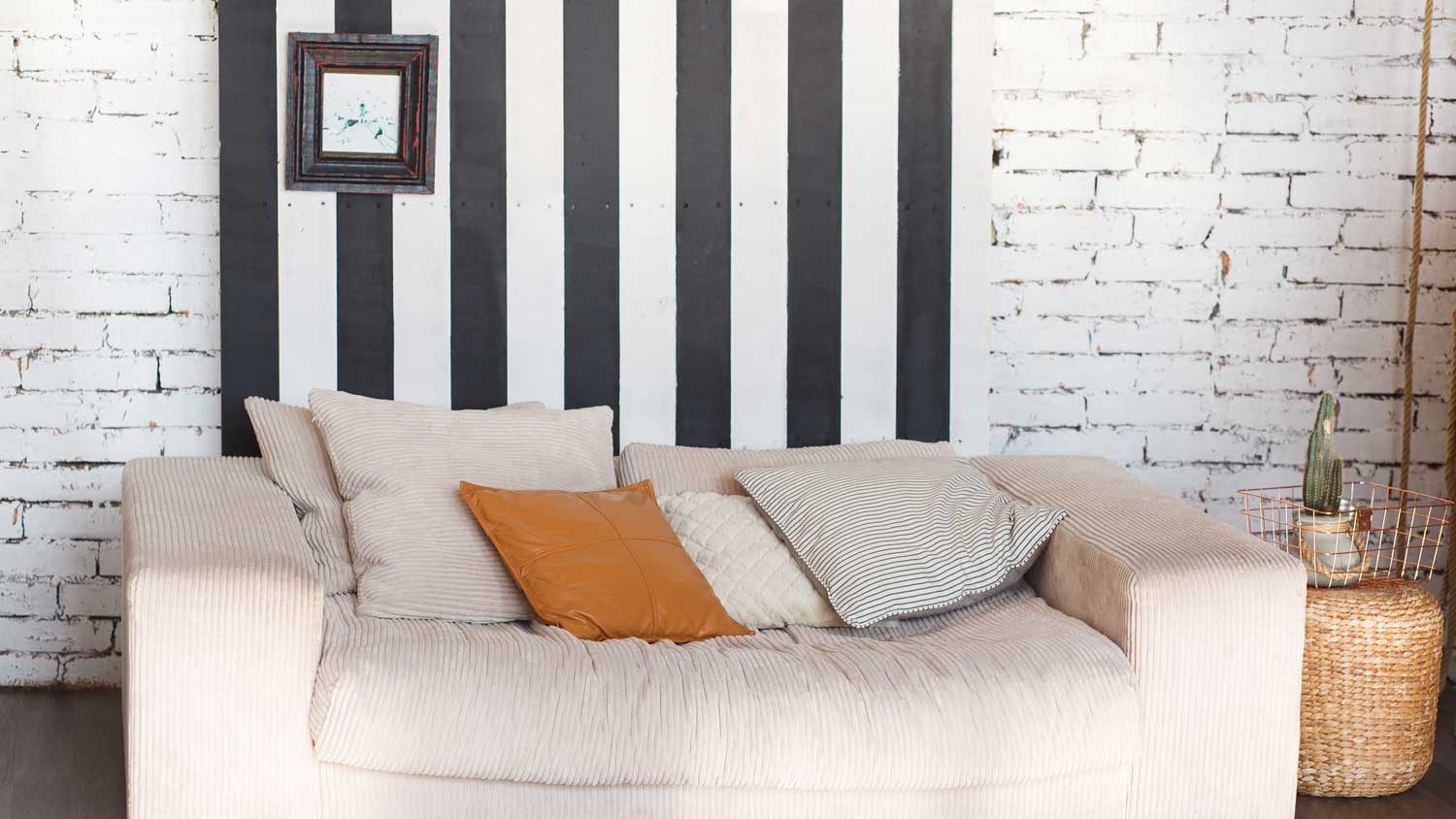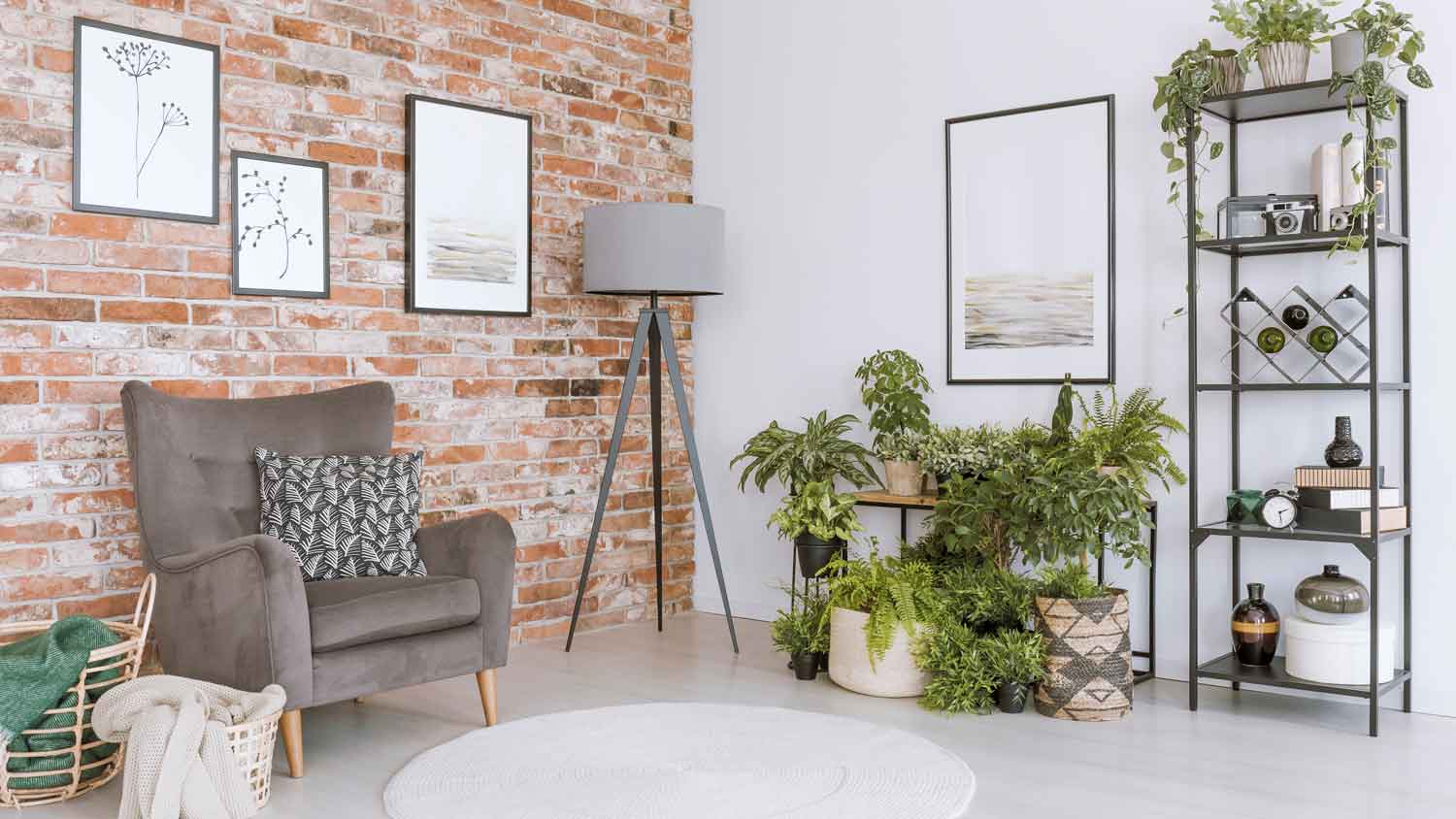
The cost to paint the interior of a house in Orlando, FL depends on size, layout, type of surface, and more. Learn what factors can influence your total in this guide.
Know the differences to paint a full picture


German schmear is a permanent application that gives brick a distressed aesthetic.
Whitewash is watered-down paint, while German schmear contains mortar.
Both methods cost around $30 to DIY.
Whitewash is easier to apply, while German schmear is more labor intensive.
Imagine you want a unique look for your brick home but don’t want to cover it with paint. If you’ve been throwing around several ideas for sprucing up your exterior, German schmear and whitewash are two brick painting methods that may have come up in your research. Use this guide to compare German schmear versus whitewash and see which is better for you.

At a quick glance, German schmear and whitewash may seem to be one and the same; however, there are several differences worth keeping in mind. Become an expert in differentiating between the two by checking out a breakdown of German schmear versus whitewash below.
| Type of Difference | German Schmear | Whitewash |
|---|---|---|
| Materials | Mortar, water | Paint, water |
| Appearance | Uneven | Uniform |
| Style | Cottage, Craftsman | Rustic, colonial |
| Application | Difficult | Quick and easy |
| Life span | Virtually forever | 20 – 30 years |
| Cost | $30 | $30 – $45 |
First things first: There are some major differences in the types of materials used to create both brick applications.
German schmear is a combo of 70% mortar and 30% water, which—as you probably guessed—results in a thick, pastelike material. Mortar contains cement, lime, and sand for a tough final product once dry.
Whitewash is a 1:1 to 1:3 ratio of latex paint and water. The more water you add to the water-based paint, the thinner and more transparent the final coating is. If you go for a 1:1 ratio, your paint will have less transparency, but you can also dry brush or splotch the paint for a more distressed appearance.

When debating German schmear versus whitewash for your bricks, the way each one affects the appearance of the brick may be one of the biggest determining factors in which one you end up picking. Here’s how both materials compare.
German schmear comes in white or gray because of its sand and cement composition. Traditionally, whitewash is made from white latex paint and water. Sometimes, however, whitewash contains additives like earthy materials to add subtle hues of off-white, cream, or beige to the appearance of the bricks.
Since whitewash is watered-down paint, individual bricks are fairly uniform in appearance. The watered-down mixture allows for natural brick hues to peek through the white layer without coming off too strongly.
German schmear has a rougher, splotchy texture that makes each brick different from the next one. You can say goodbye to that cookie-cutter house if you opt for a German schmear. This bold texture works really nicely in homes where the brick serves as a feature wall, or it can add major character to exterior brick.
Painters and DIYers traditionally use German schmear in homes with cottage, rustic, farmhouse, Craftsman, or industrial styles. Exposed wood beams are practically calling for this perfect accompaniment. And, thanks to its unique characteristics, you can even use German schmear in modern homes for a blend between modern and natural appearances.
Whitewash, on the other hand, tends to work well with a rustic, colonial, or farmhouse-style abode. Whitewash is less popular in modern homes, as it fades over time, but you can still add another coat of whitewash down the line to brighten things up.

Before you go with either brick technique, you’ll want to know how they compare and contrast in terms of application, life span, maintenance, and removal. The following differences may just affect your decision.
German schmear is more demanding to apply than whitewash. Since whitewash is latex paint mixed with water, it’s fast and easy to whitewash brick without the help of a local painter. Simply roll the liquid across your brick surface for a quick application.
German schmear is 70% mortar, making it much thicker and, therefore, harder to apply. You’ll need more physical labor to spread the mixture, and you’ll also need a trowel or grout sponge. To achieve that thin coating, you must leave only a small amount of the mixture behind, removing any excess solution.
You may need the help of an exterior painter near you for larger surface areas if you plan on applying the German schmear method.
Whitewash is by far easier to remove than German schmear. Mortar is challenging to remove without damaging the underlying brick, whereas whitewash can be removed through chemical stripping or power washing.
If you tend to change your mind over time, German schmear might not be the right brick application for your home. It’s a permanent option that won’t fade over time. This permanence, however, means your bricks are easy to maintain and don’t require regular do-overs.
Whitewash has a life span of 20 to 30 years. During this time, your bricks also require minimal maintenance, though whitewash isn’t as hardy as German schmear. You’ll need to apply more whitewash once the material starts to fade if you want your home to look as good as new.

Both whitewash and German schmear are significantly more affordable than the cost of painting brick. German schmear takes the (German) cake when it comes to overall cost savings if you compare exterior brick finishing prices. You could spend as little as $30 on materials to DIY either project for interior brick, but if you’re whitewashing your home’s exterior, you might spend closer to $45 on average.
Planning small painting and staining projects is fairly straightforward and rarely an urgent need. According to Angi data, 34% of homeowners report that their timing for these projects is flexible, which makes sense considering the scope of the job. About 14% of respondents are okay with completing the project in more than two weeks. Even if you’re not completely sure whether to use German schmear or whitewash, you can still speak to a pro to get advice and plan out your project.
Whether you’re choosing to whitewash or German schmear a surface in your home, make sure you research the technique well enough to know whether you’re ready to tackle it all yourself.
Choosing to DIY will save you a ton of money, and both techniques are accessible for most homeowners. If you can mix the solution correctly and have the patience and muscle power to apply it to your surface properly, you should be all set. That said, if you’re not confident in your painting skills, it’s perfectly reasonable to call in a paint pro who can ensure the job is done quickly and as smoothly as possible (literally).
Allie Ogletree contributed to this article.
I have used them for exterior and interior work ...plumbing electrical painting...always good at affordable prices
Roman is my go to for my painting projects. I have hired him and his crews multiple times. Each crew has been professional and friendly. They spend a good amount of time prepping the areas being painted to insure no damage. They always arrive on time and work hard all day. Roman has been a...
I recently had the pleasure of hiring Bair Paw Painting for my home interior project and I am thoroughly impressed with the outstanding service I received. Joe, the professional behind the brush, demonstrated an exemplary level of timeliness, knowledge and professionalism throughout the...
While cleaning my air ducts the technician sprayed Kilz "the paint primer" into my vents and whether that's proper or not - they did not cover my furniture or floors and they splattered Kilz all over my brown sofa. I came around the corner and immediately saw the damage. They also got it on a...
Excellent! I needed a few interior touchups and he was right on it. Our HOA hired him for exterior painting and did an excellent job. Great communication throughout the project.
Carlos was awesome! He was friendly and professional. He repaired a huge shattered glass pane in under an hour, cleaned everything up (including the glass he didnâ t even replace!) and the glass door looks way better than it used to! 10/10 would recommend!
The quality of the paint job was excellent.
As a military man, I was impressed with JHS's punctuality and adherence to the project schedule they set. Clear communication and efficient planning led to a problem-free experience. I would highly recommend them in the future and if any need comes up in the future for painting or...
I am so unhappy the work from this company. Nothing was caulked. The flooring is coming up. Looks like the plank floors had damage prior to installation. I keep finding places where the painters cut corners. Parts of the ceiling were not painted. Drips. The ceiling was not finished smoothly,...
Everything went extremely well very professional and did a good job of cleaning up after the job
From average costs to expert advice, get all the answers you need to get your job done.

The cost to paint the interior of a house in Orlando, FL depends on size, layout, type of surface, and more. Learn what factors can influence your total in this guide.

The cost to paint the interior of a house in Dallas, TX depends on size, layout, type of surface, and more. Learn what factors can influence your total in this guide.

The cost to paint the interior of a house in Atlanta, GA depends on size, layout, type of surface, and more. Learn what factors can influence your total in this guide.

Learn how to paint paintable wallpaper to add texture and color while hiding imperfections on your walls with this handy step-by-step guide.

Waterproof paint is a quick and easy way to combat moisture in basement spaces. Learn why it may not be a permanent fix and what your best alternatives are.

What are the best basement paint colors? Check out our guide to learn the wall colors that will make your basement feel bigger, brighter, and more inviting.